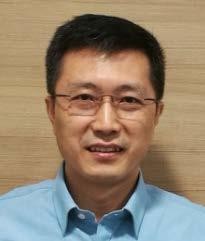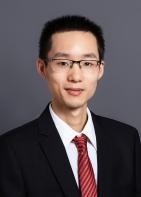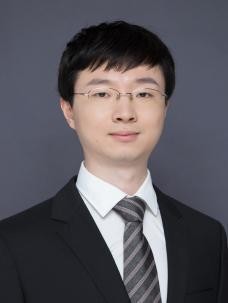2D Materials for Flat Optics and IR photonics
 Jinghua Teng
Jinghua Teng
Institute of Materials Research and Engineering, Agency for Science, Technology and Research (A*STAR), Singapore
Email: jh-teng@imre.a-star.edu.sg
Abstract:
Flat optics with subwavelength structures fabricated on a thin film have shown its strong power in light manipulation. It is promising for integrated optoelectronics for its compactness and compatibility for large volume manufacturing. Infrared (IR) technology has been widely used in biomedical imaging, environmental monitoring and optical communication. The emergence of two-dimensional (2D) transition metal dichalcogenides (TMDCs) offers new opportunities to flat optics and IR optoelectronics for their unique exciton behavior, strong quantum confinement and the easiness in forming heterostructures enabled by the out-of-plane van der Waals bonding. In this talk, I will introduce photonsieves for large field of view hologram, optical orbital angular momentum generation, far field sub-diffraction limit focusing, and the high efficiency photonsieves enabled by 2D TMDCs, followed by the introduction of room temperature high sensitivity mid-IR photodetection from interlayer excitons in TMDCs heterostructure. Lastly I will give a brief introduction of tunable plasmonic responses in near IR range from 2D materials.
Biography:
Dr. Teng Jinghua is a Principal Scientist in the Institute of Materials Research and Engineering (IMRE), Agency for Science, Technology and Research (A*STAR), Singapore. He received his B. Sc. in Physics and M. Sc. in Optics from Nankai University, China, and Ph.D. in Optoelectronics from the National University of Singapore. He has extensive experiences in both academic research and technology translation through industry collaborations. He has edited/authored 5 book/book chapters, published over 220 journal papers, filed 29 primary patents and contributed over 250 conference presentations including many invited talks. He is an editorial board member of Journal of Optics, Journal of Physics D, Opto-Electronic Advances, PhotoniX and Journal of Molecular and Engineering Materials. His research interests include nano-optics & photonics, metamaterials and metasurfaces, 2D optoelectronics, THz technology, plasmonics, semiconductor materials and devices.
Multifunctional Optical–Electronic–Magnetic Coupling in Organic Charge-Transfer Materials
 Beibei Xu
Beibei Xu
Zhejiang University, China
Abstract:
The electron transfer and the generation of new set of S = ½ spins with the exchange interaction in charge-transfer complexes (D0A0↔ Dδ+Aδ-) enable the unique coupling between photons, electrons and spins, which would be important to unlock numerous exciting technological advances in the field of flexible multifunctional integrated optoelectronic and magnetoelectrics devices. However, simultaneously obtaining superior optoelectronic properties, ferroic orders and room temperature magnetoelectric coupling properties in the charge transfer complexes remain challenging and represent an important topic in material chemistry and condensed-matter science, especially for the segregated stacking charge transfer complex, in part owing to their relatively weak intermolecular interactions.
Here, in my report, I’ll summarize multiple approaches developed in my group to control the homogenous nucleation of organic molecules towards centimeter-sized charge-transfer crystals and two-dimensional organic van der Waals heterostructures heterostructures. The strong and anisotropic interfacial coupling interaction between the charge-transfer pairs enables the tunable optical–electronic–magnetic coupled multifunctionalities, including superior broadband photoresponse, light and magnetic field dependent conductivity, dielectric properties, ferroelectricity, magnetism, magnetoelectric coupling and electromechanical properties. Flexible devices were developed for energy harvesting and sensing applications.
Biography:
Dr Xu completed his doctorate in materials science and engineering with the combination of optoelectronic and ferroelectric materials in Zhejiang University in 2014. He continued his postdoctoral study in USA, focusing on optoelectronic properties of inorganic and organic semiconductor nanomaterials. He joined College of Optical Science and Engineering in Zhejiang Univesity in 2019, where he directed his research to multifunctional optoelectronic materials and devices, and the control of thermal irradiation by intelligent meta-materials.
Next-Generation Integrated Acousto-Optics
 Huan Li
Huan Li
Zhejiang University, China
Abstract:
Heralded by the recent rapid development in nanofabrication tools and piezoelectric thin-film materials, the emerging next-generation integrated acousto-optic devices, which manipulate light (photons) with sound (phonons) in nanoscale structures, succeed conventional devices with unprecedented strong acousto-optic interaction, dense device integration, and ultrahigh frequency. In this talk, I will present our research on integrated acousto-optic devices operating at microwave frequency up to 20 GHz that induce strong modulation in photonic nanocavities and one- and two-dimensional (1D and 2D) optomechanical waveguides. Our work promises to drastically improve the performance of acousto-optic devices, including modulators, frequency shifters, tunable filters, and beam deflectors/steerers, which can be widely used for microwave and optical signal processing and sensing.
Biography:
Huan Li received his Bachelor and Master of Engineering degrees in 2007 and 2009, respectively, at Tsinghua University. He received his Ph.D. degree in 2015 at the University of Minnesota, Twin Cities, where he continued his research as a Postdoctoral Associate until February 2019, when he moved to the University of Washington as a postdoctoral Research Associate. Since March 2020, he has been a tenure-track professor and a team member in the Silicon Integrated Nanophotonics Group (SING) in the College of Optical Science and Engineering at Zhejiang University. During his Ph.D. research, he was awarded Doctoral Dissertation Fellowship for 2013-2014 by the Graduate School of the University of Minnesota. He also received 2014 Chinese Government Award for Outstanding Self-financed Students Abroad from China Scholarship Council.

